The Other Holocaust —
the Terror Famine in Ukraine
The Barnes Review
JULY, 1996
By PETER J. LORDEN
People talk about “the holocaust” as if there had been only one this century, and that one unique in human history. But what of the one inflicted by Josef “Stalin” Djugashvili on Ukraine?
Although Ukraine’s holocaust by famine resulted in the deaths of many more people than were ever attributed to Adolf Hitler in the “official” holocaust, and although it happened only a few years earlier, few now living have any perception of it. That’s understandable, as only one “holocaust” is taught in our schools and constantly featured in the media.
[Add. Image] Bodies of the victims of Holodomor
Could this be because those media are heavily influenced by people who have much to gain by promoting one while drawing a blackout curtain across the other? Is it merely by accident that obsessive promotion of the one would be diminished by extensive disclosure of the horrors and dimensions of the other?
Whatever the reasons for this disparity, surely it is time to right the balance. What historian Alfred Lilienthal labeled 20 years ago as “Holocaustamania” still continues in a torrent of books, movies and all manner of media drum-beating; leading some Israelis offended by this exploitation to quip, “There’s no business like Shoah-business.” No such exposure has occurred relative to the Ukraine’s holocaust, although that tragedy is well documented.
Harvard historian James E. Mace was being conservative when he wrote in Famine in Ukraine — 1932-33. [1]
“The Ukrainian famine was a deliberate act of genocide.”
[Add. Image] James Mace (1952 – 2004). For decades the information about Holodomor was a tightly guarded secret, but the truth began gradually to emerge, and after Ukraine’s independence, some documents that were unearthed from the KGB archives threw more light on the tragedy of 1932–1933 in Ukraine. One of the first to start the search for the truth about the famine was a US citizen, the late professor James Mace.
http://www.wumag.kiev.ua/index2.php?param=pgs20083/84
Marco Carynnyk, writing in the same book under the heading Blind Eye to Murder wrote:
“The victims of the famine in Ukraine were consigned to their slow and agonizing deaths … where once again democratic governments maintained ‘normal relations’ and cooperated in suppressing news about a genocide.”
Yet, only the “official” holocaust has been globally recognized, Carynnyk adding that the other has been;
“met by some with a conspiracy of silence that is little short of criminal.”
Wasyl Hryshko’s The Ukrainian Holocaust of 1933 [2] was published in 1983, and Miron Dolot’s Execution by Hunger: The Hidden Holocaust [3] in 1985. The latter stated:
“History has not recorded another such crime as the famine perpetrated against an entire nation, nor one ever carried out in such a cold-blooded manner.”
[Image] This emaciated Ukrainian boy appears to be begging for the most basic mortal necessity-food. A Communist party functionary wrote:“Starvation had wiped every trace of youth from their faces, turning them into tortured gargoyles.”The author Arthur Koestler observed that party-controlled Ukrainian newspapers ran pictures of healthy smiling children while “skeletons tottered in the streets.”
That Dolot was not exaggerating is made horribly clear in the definitive work on this tragedy, Robert Conquest’s The Harvest of Sorrow, [4] published in 1986. Yet none of these well documented accounts seem to have had much effect on public consciousness anywhere. How quickly the world forgets victims of even the most colossal evildoing when those aware of it lack the means to gain public awareness. On an individual basis, perhaps the best remedy would be to ask of anyone bringing up “the holocaust”:
“Which one are you referring to?”
Only a great novelist could make those murdered millions rise and walk before us, make us feel the shame and despair of people deliberately reduced to feeding on grass and tree bark, on diseased horses and dead humans, even the bodies of their own children. Vasilli Grossman’s Forever Flowing goes some way toward that. Others can only recite the bare facts of what happened, and who was responsible.
[Add. Image} Vasilli Grossman’s Forever Flowing
The first thing to be grasped about the Ukrainian holocaust — the greatest single crime of our century — is that it arose within a system which was profoundly evil. Whoever doubts that need only consult Stalin’s Secret War [5] by Nikolai Tolstoy, to whom any writer on this subject must be deeply indebted. For the sheer magnitude of its crimes against humanity, nothing in history can match those of the Bolshevik regime.
V.I. Lenin (born Ulyanov) had declared at the outset:
“The scientific concept of dictatorship means nothing more or less than unrestricted power, resting directly on the use of force. .. Yes, the dictatorship of one party.”
For its rule to be absolute, people must be made utterly dependent on the state. Thus, private property was to be abolished, along with religion and nationalism. Only one loyalty was to be permitted — loyalty to the party, which later became loyalty to the perversely deified Stalin.
{Add. Image] Vilén, Lenin bewigged and clean shaven, Finland, 11 August 1917
All means of coercion toward this end were approved, all objections regarded as treasonous, all decent motives dismissed as “obsolete bourgeois morality.” To these men, human life was nothing but raw material, to be hacked and hammered into whatever shape their ideology might dictate.
[Image] A Communist “requisition squad” removes grain hidden by Ukrainian peasants desperate to survive. People ate rodents, ants and worms. Robert Conquest estimated in Harvest of Sorrow that five million Ukrainians died. Conquest also noted that forced collectivization killed off some 200,000 Germans of the lower Volga (they had come there due to the encouragement of fellow German Catherine the Great) and that the Cossack regions of the Don and Kuban were totally decimated.
Thus Stalin wrote in 1928 that the purpose of his offensive against farmers throughout the Soviet empire was;
“to remold the peasantry, its mentality and production, along collectivist lines.”
People who thought those “lines” would have anything to do with shared austerity or the cant about “from each according to his capacity and to each according to his need” were sadly — often fatally — mistaken.
Aleksandr Solzhenitzyn estimates in The Gulag Archipelago [6] that some 60 million died there from 1918 to 1953, at which time this horrific system still held some 10 million in camps ranging across one-sixth of the Earth. It was run by the secret police organization, (known first as Cheka, then GPU, NKVD, MGB and finally KGB). Its founder, Felix Dzershinski, said,
“The Cheka is not a court; we stand for organized terror.”
[Add. Image] Felix Dzershinski
Lenin had called for concentration camps as early as 1918, but their great expansion began in 1929. At that time a Turkish Jew and former Black Sea lumber tycoon named Naftaly A. Frenkel dazzled Stalin with a grandiose plan to “build socialism” with slave labor on a starvation diet. His guiding principle:
“We have to get everything out of a prisoner in the first three months; after that, we don’t need him any more.”
[Add. Image] Jewish mass murderer, Lt. General Naftaly Aronovich Frenkel, of the murderous NKVD.
Frenkel’s pitch gained him the title “Chief Overseer of the Labor Battle.” Later he was purpose of his offensive against farmers made a general in the NKVD.
To populate a system where the death rate was so high (intentionally so, because Stalin always feared an uprising), a constant supply of fresh victims had to be supplied. Thus millions of loyal Soviet citizens were falsely accused, and an entire national minority sent to join them. Accusations were especially facilitated by Andrei Vyshinsky’s 1937 decree that it wasn’t necessary to prove a person had said or done something “wrong,” but only that he or she might have done it.
As MGB Col. Vladimir Komarov told a victim:
“You keep saying that you’re only accused but not convicted. You must understand that this distinction does not exist for us. Everyone’s guilty.”
Children were encouraged to denounce their parents; pupils their teachers. Nor were the children spared. They once made up half the Gulag population, it being customary for whole families to be shipped off and worked to death in the Kolyma gold fields or the coal mines of Vokuta. Even 12-year-olds were subject to full penalty, a Ukrainian boy in the Terror Famine getting eight years for having two potatoes in his pocket.
Why hadn’t the Soviet people, including Ukrainians, revolted against this hellish tyranny? Their failure to do so certainly reinforced a negative image of them in the outside world. Yet how could the people rise against Stalin, when most had never known anything but autocracy, and the secret police were everywhere?
Their character is shown in an order sent by NKVD boss Nikolai Yezhov to one of his deputies:
“You are charged with the task of eliminating 10,000 enemies of the people. Report results by signal.”
Such ruthless repression deprived the people of forming a resistance leadership. What could potential rebels do? People had to keep their heads down. In such a milieu, the safest advice was that which Lazar Moyseyevieh Kaganovieh (aka Kogan) gave to his niece:
“Never ask anyone about anything.”
The few centers of rebellion — notably some Ukrainian villages in the Great Famine — were wiped out.
It must also be noted that the lives of millions of people had undergone a huge dislocation, leaving them even more powerless to rebel. As we read in Red Empire [7] by Hughes and Welfare:
“Every industrial revolution requires a massive shift of population from the country to the towns. … Seventeen million people made that journey in the years of Stalin’s Five Year Plan. Illiterate, wretched, hungry, pushed around by a new ruling elite which despised them, these peasant hordes became the new working class of Russia.”
The Terror Famine of 1932-33 was not the first. Ukraine has always struggled for independence from its enormous and aggressive neighbor. That struggle became especially fierce after the Red Revolution, when Ukraine’s declaration of statehood triggered a Bolshevik invasion costing some four million lives. Not only was Ukraine “the bread basket of Europe,” but a region of prosperous and pious farming communities. The southern Ukraine in particular exemplified those three things the Bolsheviks had sworn to abolish-private property, religion and nationalism.
[Image] One of the watch towers built in fields throughout Ukraine farm regions during Stalin’s starvation holocaust. Party activists, such as the Young Pioneers seen in this photo, kept on the lookout for “snippers”; people attempting to gather ears of corn. Any peasant caught with stored grain was treated as a kulak. This meant the family would be shot or deported to slavery in Siberia.
After the massacre of Ukrainian leaders ordered by Lenin — who in 1918 offered his thugs a cash bounty for every landowner and priest they hanged — the 1921-22 famine caused by grain exportation killed millions more. Leon Trotsky was then heading the Red Army, with Gen. R.P. Eideman as his grain-grabbing deputy. Said Trotsky:
“That rich granary is ours!”
[Add. Image] Map (click to enlarge) of the Holodomor Famine Genocide Area in Ukraine and Kuban (gray area). Black border is the current borders of Ukraine. Yellow border was the Ethnographic border in 1930.
http://www.faminegenocide.com/kuryliw/map.jpg
The brutal means used to secure it — along with an anti-nationalist campaign which saw Ukrainians shot dead on the street merely for speaking their own language — caused such a drop in production that famine appeared in other parts of the Red empire. Fearing a general loss of control, the Bolsheviks had to invite foreign aid relief. Even then they insisted, through spokesman Maxim Maximovieh Litvinov, that food relief go only to other parts of the empire, not Ukraine.
In fact, Isidor Larin of Gosplan (a “Five Year Plan” commission) was still pushing for more seizures when transports were leaving points only 20 miles away from starving villages. Yet, Litvinov told the world that the USSR was again exporting grain.
“The Soviet government was actually holding its own starving citizens as hostages to be ransomed for foreign aid.” [8]
This duplicity was neatly illustrated by the spectacle of two ships berthed side-by-side in Murmansk — an American unloading grain for relief and a Soviet loading grain for sale in Hamburg, Germany.
Lenin had to make a tactical retreat. Temporarily abandoning Marxist dogma, his New Economic Plan encouraged Ukrainian culture while fostering the growth of an allegedly independent Communist Party of Ukraine.
Production duly improved. But by 1928 — with Lenin dead and his own position secure — Stalin canceled the NEP. He launched a Five Year Plan of industrialization, to be financed by exports. A principal export was grain. Since Bolshevik theory held that its production — along with political control of the peasantry — could best be increased by forced collectivization, the facade of Ukrainian independence collapsed.
“Collectivization” meant herding all agricultural workers into a kolkhoz or collective farming complex, where the state would own everything and tell them what to do.
[Image] Hollow-eyed peasants “vote” to join a collective farm; the alternative a virtual death sentence of ten years in Siberian concentration camps. Brian Moynahan wrote in The Russian Century:
“Two million kulaks were dumped in ‘special settlements’ on a 400-mile stretch between Gryazovets and Archangel … At Yemetsk, there was a vast camp of families that had been separated from their fathers. Thirty-two thousand lived in 97 barracks, with no medical care.”
Stalin’s first and terribly consequential step toward it was to get rid of independent farmers. This category came to include even the smallest of small holders, such as those who owned more than one cow, or had hired others to work for them.
These kulaks were denounced as “vermin,” “capitalist-readers” and “enemies of the people.” Stalin’s overall plan for “liquidating the kulaks as a class” throughout the Soviet Union was headed by Commissar of Agriculture A. Yakovlev. Its expediter in Ukraine was Yakov Bauman.
In this “dekulakization” campaign of 1929-32, some 3 to 4 million Ukrainians were either murdered or shipped away — often entire families — to early deaths in the Gulags. Only the poorest peasants then remained, and it was these who were left to starve in villages from which the Bolsheviks had systematically removed every scrap of food. KGB defector Viktor Kravchenko wrote of them. [9]
“They had been trapped and left to starve, each in his own home, by a political decision made in a far-off capital around conference and banquet tables.”
[Add. Image] Victor Kravchenko was born in Yekaterinoslav on 11th October 1905. His father, a railway worker, was a socialist who participated in the 1905 Russian Revolution. He was trained as an engineer and worked in the Donets Basin region. He joined the Communist Party in 1929. Kravchenko was an expert in metallurgy and was placed in charge of a rolling mill at Nikopol. He was deeply shocked by the Great Famine that he witnessed in 1932-1933, that was caused by the economic policies of Joseph Stalin.
Kravchenko wrote about these experiences living in the Ukraine in his autobiography, I Choose Freedom (1947):
“People dying in solitude by slow degrees, dying hideously, without the excuse of sacrifice for a cause. They had been trapped and left to starve, each in his home, by a political decision made in a far-off capital around conference and banquet tables. There was not even the consolation of inevitability to relieve the horror. … Everywhere were found men and women lying prone, their faces and bellies bloated, their eyes utterly expressionless.”
http://spartacus-educational.com/RUSkravechenko.htm
When told in that capital of their hideous suffering, Stalin replied, “Moscow has no tears.”
In July 1932, the Ukrainian Communist Party had seen that a famine was imminent, and asked that expropriations be reduced. Moscow’s response, conveyed by Vyacheslav M. Molotov and Kaganovich, was that the quotas must be met. To ensure this, Stalin sent in the murderous Pavel P. Postyshev with his lieutenants Ye Veger and Mendel M. Khatayevich, the latter a senior member of the Politburo.
Other accomplices included L.I. Kaminsky, chairman of the Collective Farm Center, and V.A. Balitsky, head of the Ukrainian GPU. He reported to Stalin’s crony, a Gen. Voroshilov, in mid 1933:
“From 8 to 9 million people have already perished in the Ukraine alone.”
Given that a few years later Voroshilov would calmly countersign lists of thousands of his brother officers to be executed in Stalin’s purge of the military, this news is not likely to have upset him.
[Add. Image] (left to right) Stalin, Molotov and Kaganovich
But the prime movers and overall enforcers of the Terror Famine were Stalin’s “trustees,” Molotov and Kaganovich, who were to be partners again in the Terror of 1936-38. Roy Medvedev, in All Stalin’s Men, [10] tells us that Molotov, long Stalin’s foreign minister and ever the coldly efficient bureaucrat;
“played a particularly sinister part in Ukraine in 1932, where he directed grain procurement operations in the southern provinces.”
As for “Kogan,” he was always Stalin’s chief trouble-shooter, the man relied on to get things done no matter what the cost in human suffering. When Soviet arms reconquered the Polish Ukraine in 1944, he was the man Stalin sent in to speed up collectivization. Kahan. [11] however, stated:
“Stalin felt that, as a Jew, Lazar would be more ruthless in eliminating Ukrainian nationalist tendencies. … He was not disappointed.”
In addition to the millions dying in Ukraine itself, others died in the nearby Don and Kuban areas. All told, some 8 million Ukrainians starved to death in the holocaust of 1932-33. Meanwhile, Stalin annually sold to the West expropriated grain equivalent to a quarter-ton for each starved individual. No one should doubt that the Terror Famine was man-made, a deliberate act of genocide. It stopped precisely at the Ukraine-Russia border.
[Add. Image] An image of young Ukrainian boys struggling to avoid death by starvation.
Starving Ukrainians were forbidden to leave their homeland, and no one was allowed to bring food into it. Tens of thousands of “loyal” urban communists, brainwashed to view the peasants as their enemies, were sent into the countryside to seek out whatever food the peasants might have hidden. One of them was Isaac Babel, another Lev Kopelev, later well-known as a “dissident writer.” Red Empire [12] quotes him:
“Our great goal was the universal triumph of communism, and for the sake of that goal everything was permissible — to lie, to steal, to destroy hundreds of thousands and even millions of people.”
These expropriators were backed by half-a-million Red Army soldiers and countless GPU agents, not to mention the ubiquitous commissars assigned since 1928 to enforce collectivization.
How these latter had behaved, descending on peaceful villages to bully the peasants into abandoning their independence, is best described by Miron Dolot, [13] who lived through it as a boy. The arrogance of a Commissar Zeitlin is tellingly presented there. Peasants were told, “If you want to eat, join the Kolkhoz!” But in the end there was nothing to eat even there. Watchtowers were set up in the fields and anyone trying to glean a few grains from a harvested field could be shot for “violating socialist property.”
That charge was even brought against men who tried to feed their children by catching fish in a nearby river. These people were supposed to die, and anything they did to avoid it was a criminal act. That there was plenty of food could be seen in piles of grain left to rot; but heavily guarded and maddeningly beyond reach. Whole transports were willfully destroyed in order to boost the export price.
All of this is detailed in The Harvest of Sorrow, previously cited. Overall figures on the death toll from Stalin’s agricultural policy are hard to pin down. As Nikita Khruschev subsequently admitted, without mentioning his own bloody record in Ukraine — “Nobody was keeping count.” And Stalin did his best to ensure that nobody could. He had the 1937 Census Report suppressed and made it a crime even to utter the Russian word for “famine.”
The once-prosperous Don and Kuban areas, where some five million Ukrainians had lived, were reduced to the same utter desolation as their southern homeland. Particularly stomach-turning is Conquest’s chapter on the fate of the children, who may have accounted for some four million of Ukraine’s total dead. Orphans of kulak families were treated with special cruelty-ostracized or beaten-up, denied the little food given others.
Few dared to help them, because of the Leninist axiom: “In the class struggle, philanthropy is evil.” Many were shot or drowned in sunken barges. Thousands of others were left to starve under guard in isolated camps and barns or collected in a “children’s town,” which was actually a bare field. People asking their fate were told, “The Party is looking after them.” Indeed it was — their corpses were hauled away by night.
In the midst of all this, Conquest tells the story of Deputy Commissar of Education M.S. Epstein, who spoke in glowing terms of Soviet child care as compared to the pitiful status of children in “the capitalist countries.” [14]
[Image] Stalin had few prestigious dupes with the intellectual influence of George Bernard Shaw. Here, GBS is being driven in Moscow during the height of the Ukraine forced famine. He wrote in The Times of London that “tales of a half-starved population dwelling under the lash of a ruthless tyrant” were nonsense. He wrote of “crowds of brightly dressed, well-fed; happy-looking workers.” In a time when Orthodox cathedrals and churches were being razed or turned into warehouses, Shaw claimed:
“In the USSR, unlike Britain, there is freedom of religion.”
Were there no foreign aid organizations to help the people starving from collectivization, and not only in Ukraine? Indeed there were, but Stalin long refused to let them in. Soviet President Mikhail Kalinin even branded such organizations as “political impostors.” When foreign food distribution was finally permitted, Ukraine was again excluded. Stalin had learned from Lenin’s famine how effective a weapon hunger could be. He was now using it to crush Ukrainian nationalism once and for all.
No outsiders must interfere with his genocidal project. When it was over in late 1933, Stalin formed a Committee for Migration to settle the depopulated area with Russian farmers, Those sent in had to drag corpses out of the houses and dispose of them. Although they cleaned and whitewashed everywhere, the stench of death remained so pervasive that many gave up and returned to their own homes. As the distinguished editor of New York’s Ukrainian Quarterly, Dr. Walter Dushnyck, summed it up in a 1983 pamphlet, [15]
“This was a gigantic holocaust inflicted on a nation starving to escape Moscow colonialism.”
What was the world’s response to this horror? Some gruesome photos in newspapers, a few demonstrations. But these were mostly swamped by Soviet propaganda. Officials in London and Washington knew the truth, but took the line that this was an internal affair of the Soviet Union, to be ignored for the sake of “preserving diplomatic relations with a friendly power.” Part of a massive cover-up by that power was the carefully sanitized tour for foreign dignitaries such as French Prime Minister Edouard Herriot, who then denounced any talk of famine as “Nazi propaganda.”
The cover-up was also reinforced by communist sympathizers in both the British Foreign Office and the American State Department, as well as by Fabian Socialists George Bernard Shaw and James and Beatrice Potter Webb. Tolstoy tells us [16] that some affluent Americans also helped by pushing for American recognition of the USSR in return for a lucrative deal on stolen czarist artworks.
[Add. Image] Bernard Shaw and Lady Astor with party leaders and Culture of the USSR; far left – Karl Radek
Banker Andrew Mellon and the Hammer clan (principally Armand and his father) were prominent here, Armand’s father having once led the U.S. Communist Party.
A similar role was to be played in the years of 1937-38 by Ambassador Joseph E. Davies, whose best-selling Mission to Moscow, says Tolstoy;
“was a sustained apologia for all of Stalin’s excesses.”
(That role was to be played again in the 1940s, according to Vaksberg, by such American literati as Howard Fast, Sholem Asch, Iilian Hellman and Albert Khan;
“whose shameless lies praising Stalinism and Stalin it is impossible to read without revulsion” [17]
[Image] This ludicrously staged Soviet propaganda scene (implying the wonders of collective farming) loses its humorous aspects when it is realized that it was photographed in 1933, during the Ukraine holocaust. Brian Moynahan wrote in The Russian Century that, three years after the start of collectivization, the number of sheep and goats had been reduced by two-thirds, the number of cattle and horses halved.
Stalin’s chief spokesman in this famine was again Maxim Litvinov, now risen to foreign minister. He steadfastly dismissed all reports of famine in Ukraine as lies put out by “counter-revolutionary provocateurs.” To their eternal discredit, the bulk of the Moscow foreign press corps backed him up. Only a few, most notably the Manchester Guardian’s Malcolm Muggeridge, tried to get the truth out. The rest, anxious to “keep in” with Soviet censors, allowed themselves to be led by a man whom Muggeridge later called:
“The greatest liar I have met in 50 years of journalism.”
That man was Walter Duranty, an English correspondent for the New York Times. He ridiculed “scare stories about a non-existent famine” while privately telling friends that the death toll could reach 10 million. The other correspondents even joined him in lampooning an honest Welsh writer named Gareth Evans, who back-packed through a famine area on his own and published a horrifying account of it in London.
[Add. Image] Walter Duranty (1884 – October 3, 1957) was a Liverpool-born, Anglo-American journalist who served as the Moscow Bureau Chief of The New York Times (1922–36). Duranty won a Pulitzer Prize in 1932 for a series of stories on the Soviet Union. Duranty has been criticized for his denial of widespread famine, most particularly the Ukraine mass starvation (1932–33). Years later, there were calls to revoke his Pulitzer; even The New York Times acknowledged his articles constituted “some of the worst reporting to appear in this newspaper.”
Duranty’s reward came in a rare interview with Stalin, then his being allowed to accompany Litvinov on the Soviet foreign minister’s American trip to negotiate FDR’s December, 1933 recognition of the Soviet Union. Then Duranty — in the very year of the holocaust he’d helped to cover up — was honored by The Nation magazine for his “enlightening and dispassionate journalism.” He was eulogized in the New Yorker.
Naturally, Karl Radek lauded Duranty in Pravda for his help in “overcoming elements hostile to American recognition.”
[Add. Image] Walter Duranty at a dinner party in his Moscow apartment.
There can be no doubt whatsoever regarding the scope and incomprehensible brutality of the Ukraine forced famine. Yet one still hears it said by Soviet sympathizers that the famine —and all other Bolshevik crimes against humanity — were actions taken out of “historical necessity.” Without such harsh measures, they say, Stalin could never have industrialized, never beaten Hitler.
But how could beating Hitler have been helped by so oppressing your own subjects to the extent that many of them initially welcomed the Germans as liberators? Yet the lies of Litvinov et alia still echo around the world. And they still constituted truth for the Soviet leadership as late as 1983. Canadian Prime-Minister Brian Mulroney’s declaration to a Ukrainian group in Toronto that the Terror Famine of 1932-33 was indeed “a man-made tragedy, manufactured in Moscow” drew a stiff protest from the Soviet embassy in Ottawa.
And the cover-up continues. It is understandable that those massive and protracted horrors rate no mention in any Soviet encyclopedia. Interestingly, why does the Chronology of John Paxton’s California-issued 1933 Encyclopedia of Russian History show no entry at all for the epochal year of 1933? Such studied exclusions emphasize why the truth about the Ukrainian holocaust must be told.
Solzhenitsyn complained that none of the Bolshevik monsters such as Molotov and Kaganovich — then still living comfortably in Moscow — had ever been tried for their crimes against humanity; although some 86,000 “Nazi war criminals” had been convicted by 1966. He says,
“The imagination and the spiritual strength of Shakespeare’s evildoers stopped short at a dozen corpses because they had no ideology.” [18]
The story of the Ukrainian holocaust must continue to be told, for the starved ghosts of all those people murdered six decades ago are still with us, begging for recognition. Their most fitting epitaph may be the cruel comment of the commissar responsible for sending 50,000 of those “loyal” urban communists into the Ukrainian countryside with orders to be ruthless in stripping it of food. As recorded by Conquest, Mendel M. Khatayevich told them:
“Throw your bourgeois humanitarianism out the window; act like Bolsheviks worthy of Comrade Stalin.” [19]
FOOTNOTES
- Famine in Ukraine — 1932-33, Roman Serbyn and Bohnad Krawchenko, editors, University of Alberta Press, Edmonton, 1986.
- The Ukrainian Holocaust of 1933, Wasyl Hryshko, Bahriany Foundation, Toronto, 1983.
- Execution By Hunger: The Hidden Holocaust, Miron Dolot, W.W. Norton, New York, 1985.
- The Harvest of Sorrow: Soviet Collectivization and the Terror Famine, Robert Conquest, University of Alberta Press, Edmonton, 1986.
- Stalin’s Secret War, Nikolai Tolstoy, Jonathan Cape, London, 1981.
- The Gulag Archipelago 1918-1956, Aleksandr I. Solzhenitsyn, one volume edition, Harper and Row, New York, 1985.
- Red Empire — The Forbidden History of the USSR, Gwynneth Hughes and Simon Welfare, Weidenfeld and Nicholson, London, 1990.
- Serbyn and Krawchenko, p. 157.
- I Chose Freedom, Viktor Kravchenko, Rutgers University Press, New Jersey, 1988.
- All Stalin’s Men, Roy Medvedev, Anchor/Doubleday, New York, 1983.
- The Wolf of the Kremlin, Stuart Kahan, Willianl Morrow and Co., New York, 1987.
- Hughes and Welfare, ibid.
- Dolot, ibid.
- Conquest, ibid.
- 50 Years Ago: The Famine Holocaust in Ukraine, Dr. Walter Dushnyck, World Congress of Free Ukrainians, New York, 1983.
- Tolstoy, ibid.
- Ibid., p. 339.
- Solzhenitsyn, p. 77.
- Conquest, p. 261.
Caption reference: The Russian Century — A Photographic History of Russia’s 100 Years, text by Brian Moynahan, Random House, Inc., 1994
—————————————————————-
PDF of this post. Click to view or download (4.2 MB) >> The Other Holocaust — The Terror Famine in Ukraine Ver 3
Version History
Version 5: Nov 2, 2016 – Improved formatting.
Version 4: Jun 3, 2015 – Improved formatting.
Version 3: Jan 31, 2015 – Added additional images.
Version 2: Jan 31, 2015 – Added two missing original pictures. Added additional image.
Version 1: Published Jan 25, 2015

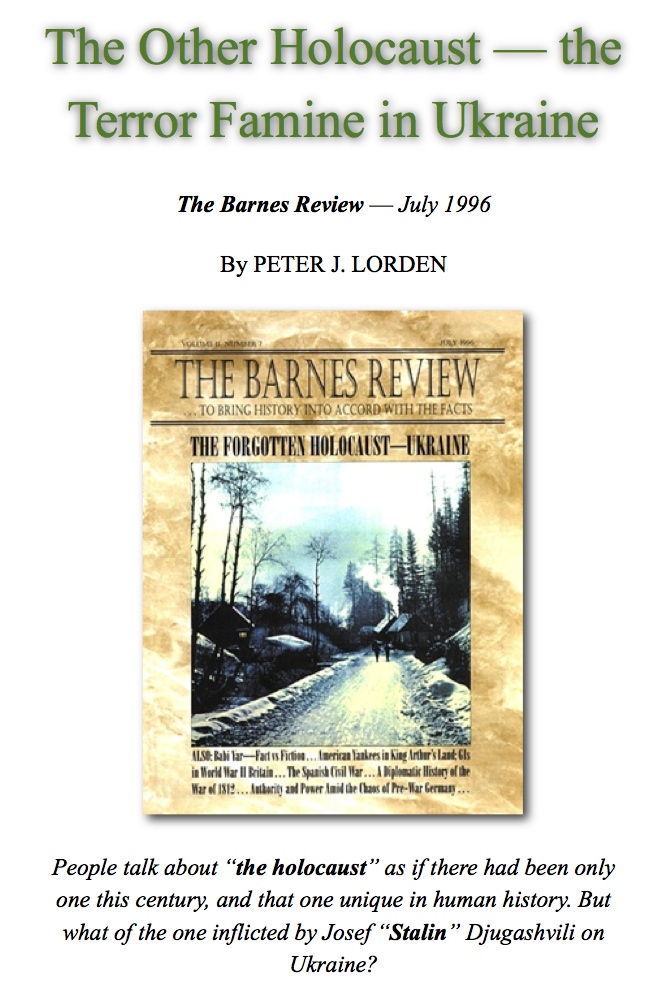
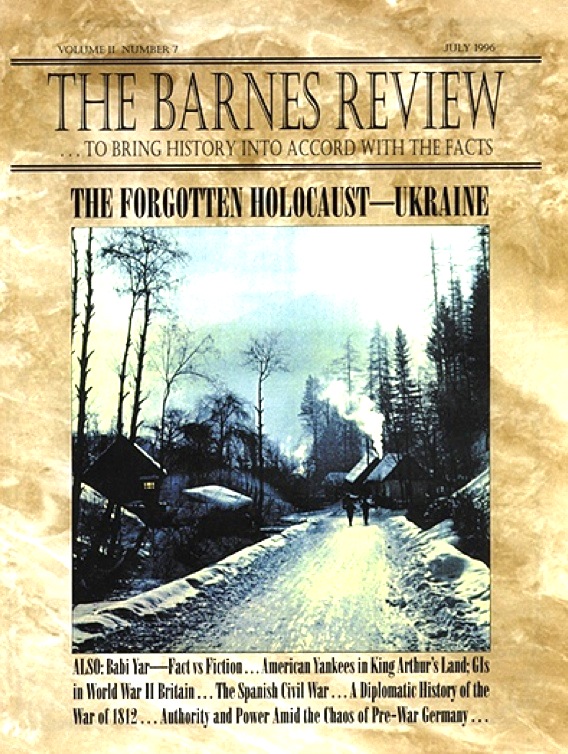


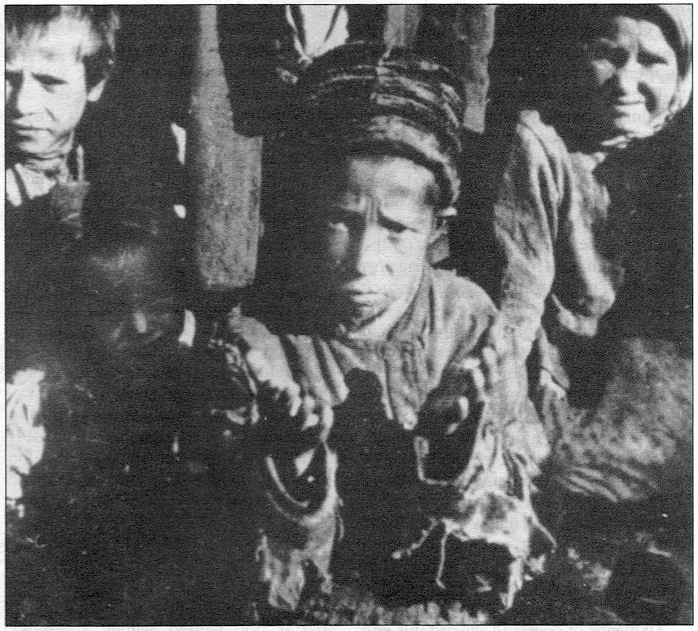


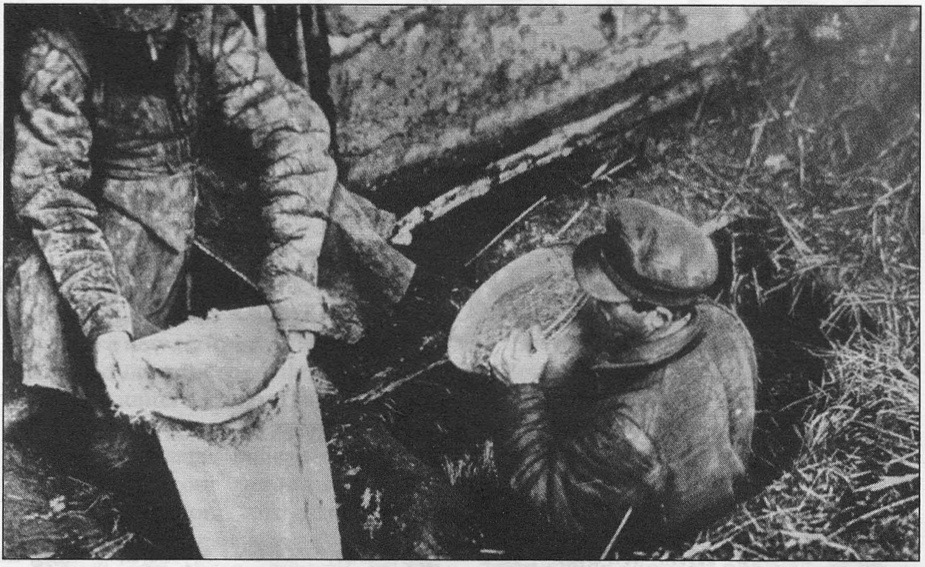
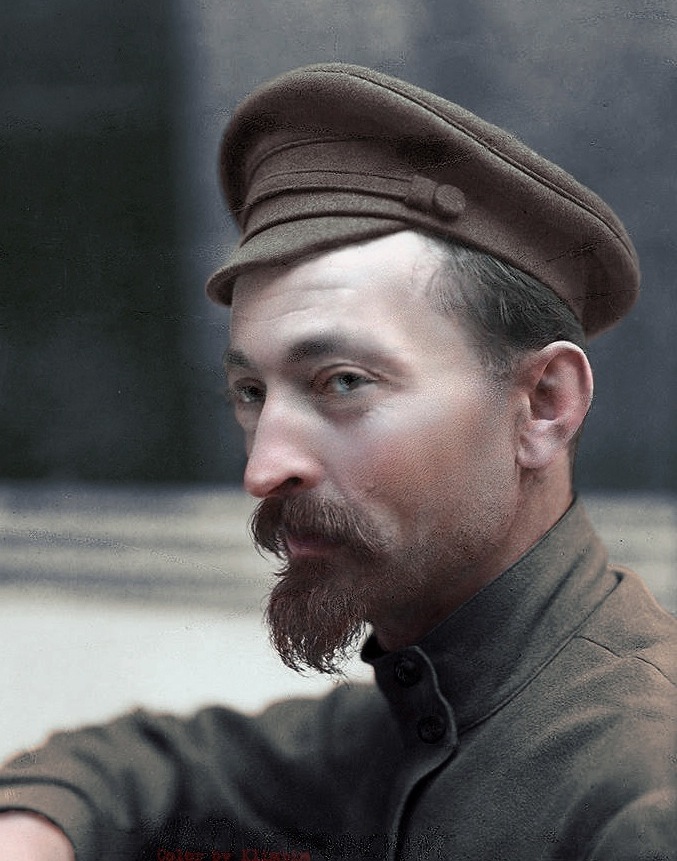

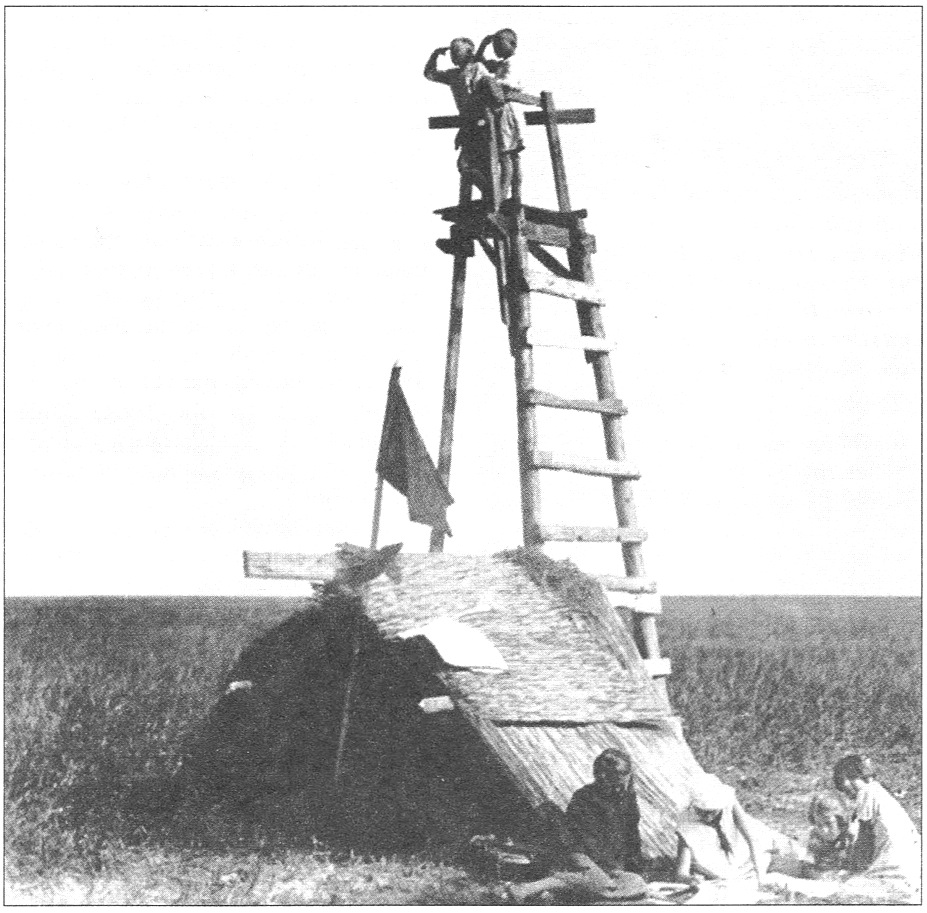






















most of the evildoers here are of the zionist jew variety in human form being sons of the satan! bastards!
This kind of racist remark is one of the reasons that the Holodomor continues to be repressed. It’s really inappropriate.
These claims, at this point, need to be reexamined. For one thing, some of territory supposed to be Soviet “Ukraine” in 1932–33 was actually in Poland. Find a 1932 map. Look closely. Second, there were a number of recorded famines during this time. What is special about the one you mention? Is it that Hitler and Hearst were using it, along with Trotskists, to spark discord in the re-formatted Russian empire? This case is special, you claim, because the Nazis say it is? Not a good source.
A photo gallery of this supposed famine was found, circa 2003-2007, unquestionably to be using photos from the Great Depression in the United States, and a famine in Russia which occurred immediately after the Bolshevik coup. This has been verified and admitted to. The Ukraine famine was so great that photos from the mid western USA needed to be used to illustrate. What is your response? What’s the source of your photos?
If you are angry at “Jews” for murderous practices, why depend on suspicious claims produced by the likes of Trotsky? Did you know Trotskists are the primary source, along with Nazis, for your claims? Why are you more apt to damn Stalin than Trotsky, given your bias?
Why is the mass death in America during the Great Depression not “the other holocaust”? I have testimony from someone who lived in 1930s rural America that suggests food reserves were deliberately being destroyed. I smell a Russophobic rat, a desire to find one guilty party—Russia—in all of history. Who was Stalin? What did he do? Perhaps it’s time to do a little more homework instead of compiling images and bits of text spotted while playing with your favorite search engine.
Hey, Disinfo Troll…are you a JEW? A communist? But I repeat myself…
You are clearly blind if you can’t see that the part you refer to as “Poland” is precisely the part NOT affected by the Holodomor. Seems that you are deliberately twisting things, which makes one wonder how much more of your bizarre text is serving the same purpose.
@ Cementcomment
Comments RSS
Leave a Reply
There were no famine on Polish territories that are part of Ukraine as depicted on the map. If you want to lie, try to be more credible so great unwashed might believe you.
Welcome to the not so brave 21st century.
Meet the neo-Bolsheviks
(same as the old Bolsheviks)
Brought to us all (via) the Yehuda Triangle
New York – London – Tel Aviv
It’s Gareth Jones, not Gareth Evans. Disappointing mistake, as it casts doubt on other information if such a simple item as a person’s last name is incrrect.
Pingback: Starvation in Europe’s Breadbasket: The Ukrainian Mass Murder
Pingback: Millennial Woes - The Passion of Jordan Peterson - Speech to Blue Awakening — TRANSCRIPT - katana17katana17
Pingback: Keith Woods – Ban the ADL – Sep 3, 2023 – Transcript | katana17